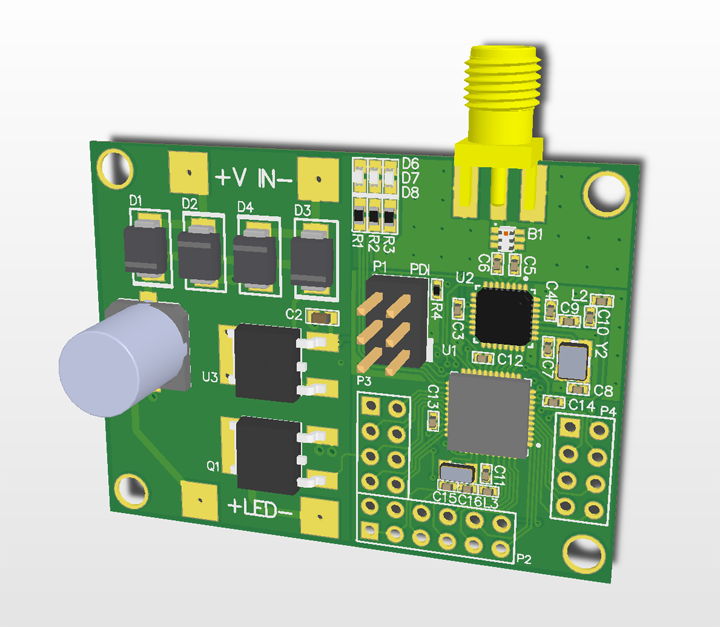Lighting Control Boards
I designed these boards to be integrated into 12VDC track lighting fixtures with MR16 LED lamps in the Media Lab atrium. They are based on the Atmel XMega A4 series (originally designed for the ATxmega32A4 and that’s what’s in the atrium lighting installation, but forwards-compatible with the A4U series chips; most of my current uses for this board use the ATxmega128A4U) and the AT86RF231 radio (though the RF230 and newer variants like the RF233 should also be usable.)

The radio is pinned out to the SPI interface on port C, and 3 LEDs along the edge of the board are pinned out to port D. Dimming the MR16 lamps is accomplished by PWM control of a low-side N-channel MOSFET, connected to a PWM output compare unit on port E. All of the other GPIO pins are broken out to 100-mil headers on the board, which includes all of ports A, B, and E, and part of ports C and D. 22 total GPIO pins are broken out.
The left half of the board contains the power supply circuitry and the power MOSFET. The bridge rectifier on the power input allows for the supply to be connected in either polarity, or to AC power. A linear regulator cheaply (but inefficiently) drops the supply voltage to the 3.3V needed by the logic on the board. If the power supply circuitry and MOSFET are not needed, the entire left half of the board may be cut off and 3.3V fed directly to the 100-mil headers.
The RF antenna can be attached via an SMA connector, but in low-cost applications a 25mm wire (quarter-wave antenna) works very well.
The removability of the power supply circuitry and the extensive I/O breakout make this board useful as a general-purpose Xmega wireless development board, and I’ve indeed reused it in several other wireless projects.
I have adapted my basic extension of Atmel’s 802.15.4 MAC/transceiver toolkit (which is now quite dated and contains unnecessary workarounds for AT86RF230 revision A silicon errata) to this board. Most of my recent development, however, uses the Atmel Lightweight Mesh protocol, to which I’ve added HAL support for the A4 series chips and board support for this board.